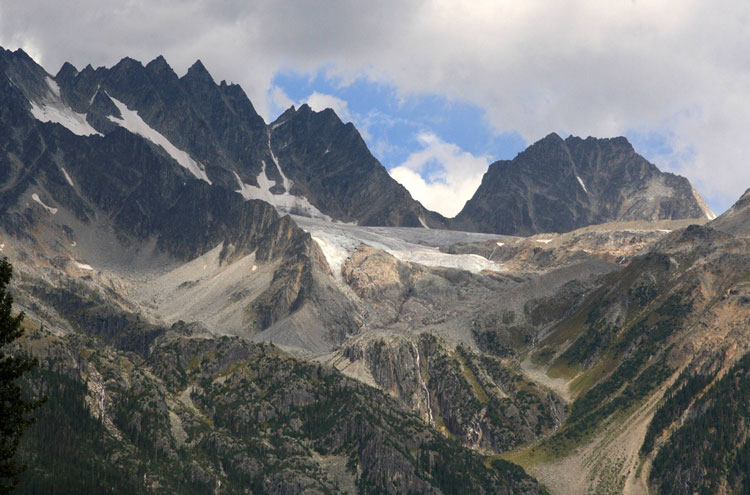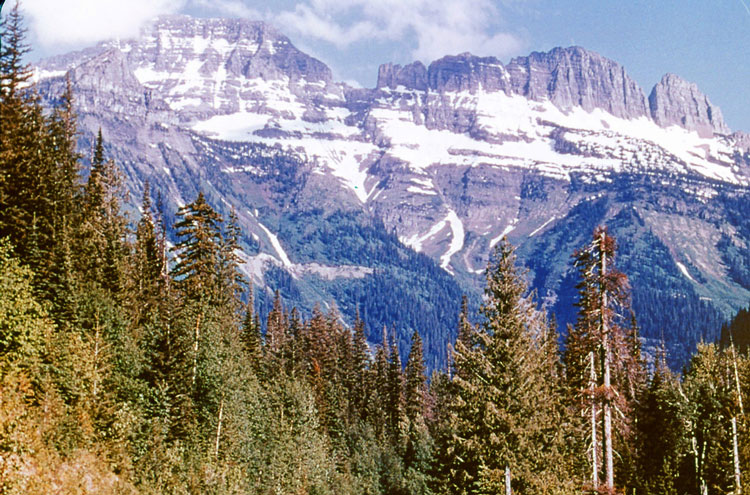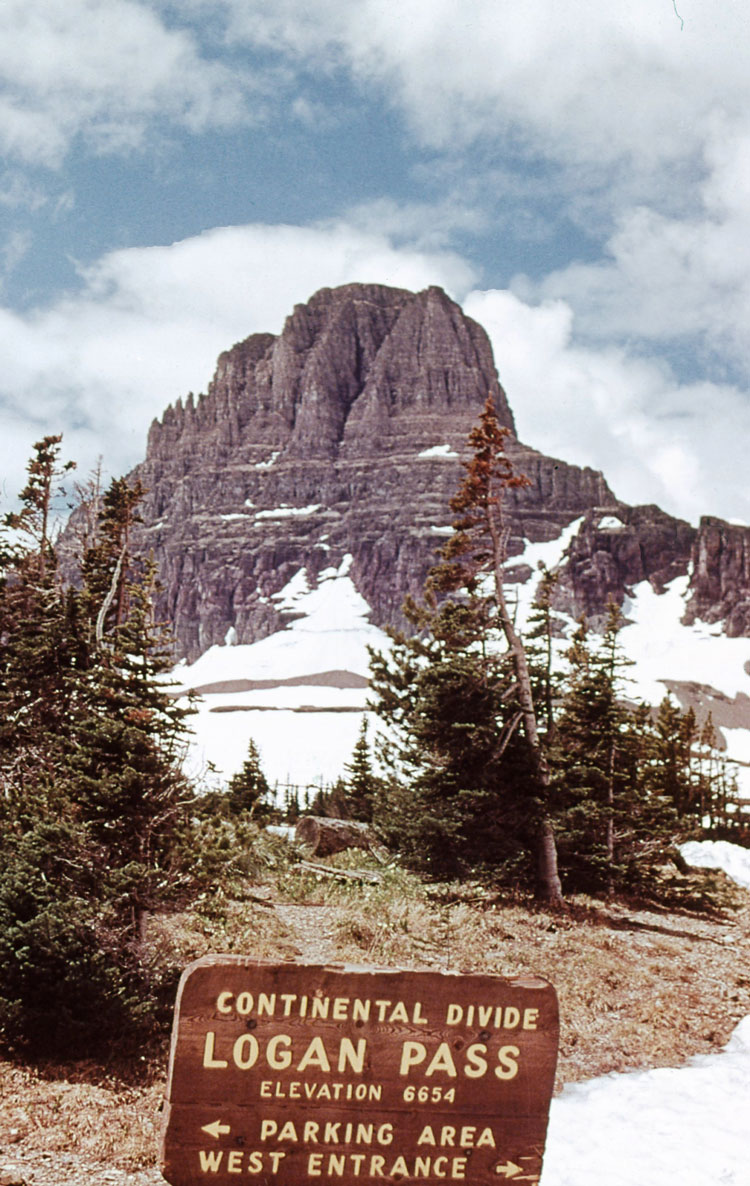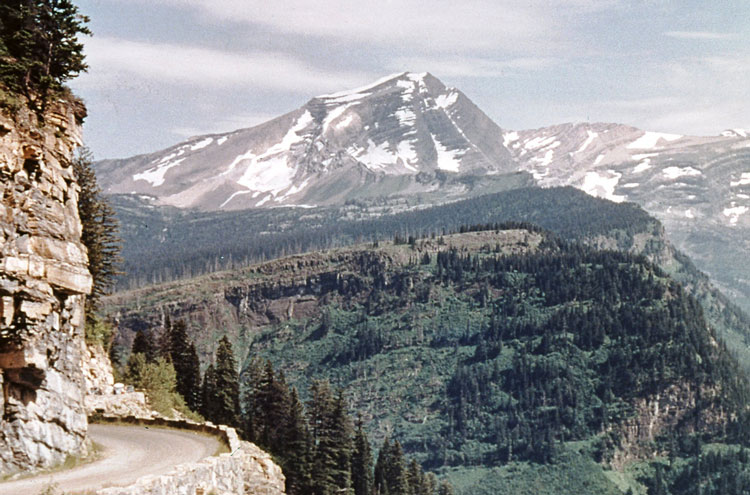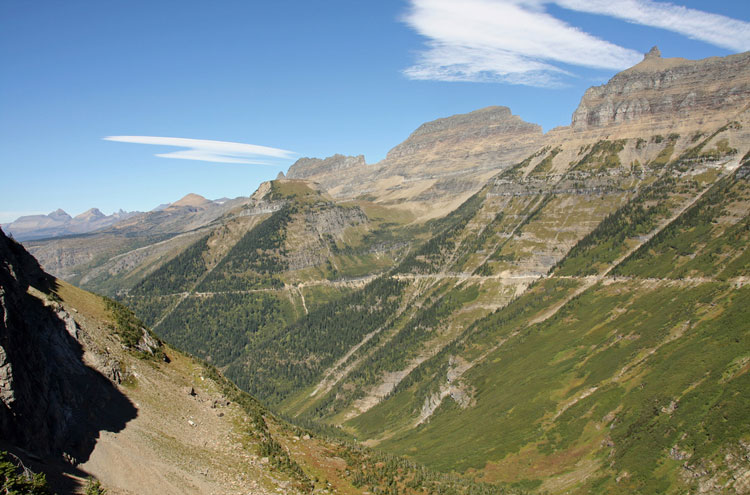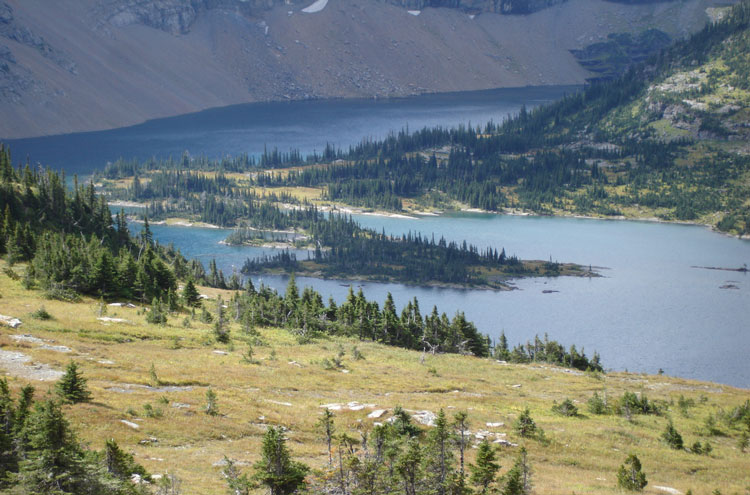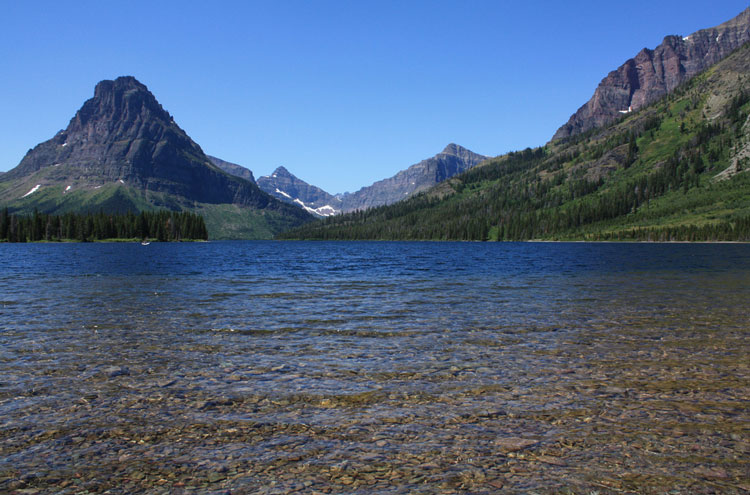Glacier National Park
Key information: Glacier National Park 
- Montana's Glacier National Park is theatrical and dazzling: a vast area filled with stunning vistas of sheer mountains, foaming waterfalls and startlingly blue lakes, spilling into the US from the Canadian Rockies.
- With hundreds of animal species as well as more than 1,000 different types of plant, Glacier's ecosystem is impressive and well-protected. Endangered species such as the grizzly bear and the Canadian lynx live here, as well as the remarkable mountain goats the area is famous for.
- From gentle short strolls to very difficult long scrambles, Glacier NP has walks for everyone. And the best bit? They are all stunning.
- This can be a tough place to walk, in high, remote mountains, on which you will often have to be self-sufficient. And, beware bears. Come prepared and take all precautions.
Walkopedia rating
- Walkopedia rating84
- Beauty35
- Natural interest17
- Human interest0
- Charisma34
- Negative points2
- Total rating84
- Note: Negs: best trails popular
Vital Statistics
- Length: Variable
- Level of Difficulty: Variable
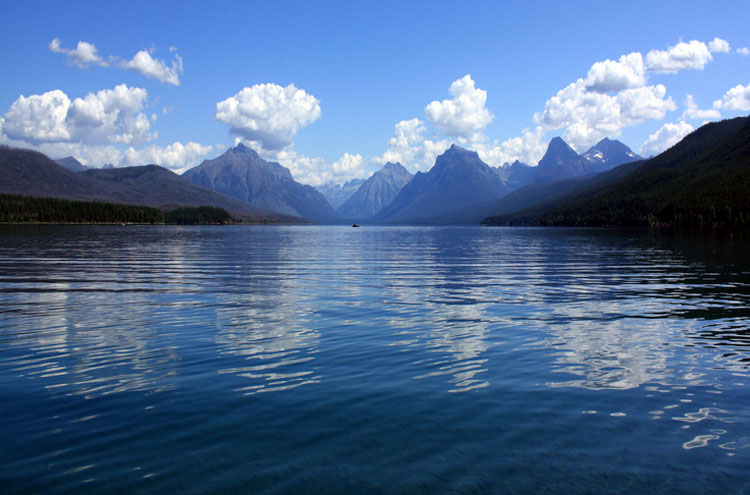
WALK SUMMARY
Stunning Rocky Mountains scenery, and a plethora of wild animals to thrill even the most jaded palate, make camping out in the backcountry of Montana's Glacier National Park a thrilling experience.
Described by the native Blackfeet as the "backbone of the world", the region's forest-coated peaks tower over the countryside, waterfalls crashing down their sides into the rivers feeding Glacier's myriad lakes. With heavy snow throughout the long northern winter, the park bursts into life for its short season, walkers freely roaming the 700 miles of glorious trails.
There have been humans living in this area since the native Americans moved there 10,000 years ago, but little evidence of human activity scars the wilderness. Camping here is basic, and seems even more isolated than Yellowstone's vast grandeur.
Known as the "Crown of the Continent" ecosystem, wildlife here is remarkably varied: with more than 1,000 species of plants, the range of vegetation is diverse, with some varieties found only in Glacier. The mammals here seem (appropriately) to step from the pages of a wilderness adventure - grizzly bears, black bears, wolves, wolverines and mountain lions are all found in the park in varying numbers, alongside less hazardous but equally interesting mountain goats (the parks official symbol), bighorn sheep, elk, moose, porcupine and mink. Birds of prey soar through the skies above the park, whilst geese, herons and colourful harlequin ducks paddle in the lakes and rivers.
Out towards the Great Plains, the Chief Mountain dominates the skyline; its 1,372m height may seem paltry against some of America's greats, but its steep sides rise alone from the flat ground, and it has a considerable impact on visitors and inhabitants alike.
Further in, the 53 mile long Going-to-the-Sun road, the only road to cross the park, attracts many people. There are gorgeous views over the vicinity, with a particularly fabulous vista overlooking Going-to-the-Sun Mountain, and it crosses the Continental Divide at Logan Pass. 2010 was the 100th anniversary of the park, and to mark it the road has been reconstructed.
Unfortunately, global warming is making itself felt in Glacier NP. With only 27 of the numerous glaciers which gave the park its name remaining, it is estimated that by 2030 they will all be gone. The effect this will have on the environment here is unknown, although it seems doubtless that some of the animals dependent on cold weather will face difficulties with the rising temperatures.
Now is therefore the perfect time to enjoy this fabulous place, and hiking here seems a privilege. There are stunning multi-day treks, with steep climbs to high altitudes, basic camping in remote backcountry, and a variety of beautiful backdrops through which to walk. However, a sense of this isolated wilderness and its sheer, dramatic beauty can be achieved even on its shorter walks.
In addition, since the park was opened in 1910 there have been 10 deaths from grizzly bear attacks.
Day hikes
Day hikes are abundant, and this ideal hiking country, with its spectacular panoramas, ensures a superb experience on any trail. Do not let a search for solitude push you away from either the Grinnell Glacier or the nearby Iceberg Lake Trails, which are popular simply by virtue of being some of the best hikes in the park. However, as two of the best areas - Many Glacier Valley and Logan Pass - are generally busy, those in search of isolation may find a multi-day hike the best way to experience Glacier.
- The Grinnell Glacier Trail, beginning in Many Glacier Valley, follows a relatively flat path along the shorelines of Swiftcurrent Lake and Lake Josephine before rising steadily towards Upper Grinnell Lake, an expanse of milky white water fed by the retreating Grinnell Glacier. This is a gentle walk and relatively easy option, as well as providing stunning views over three glaciers - but as a result is one of the more popular hikes.
- Iceberg Lake Trail is a great walk, with a stretch passing beneath the imposing Ptarmigan Wall, and a stunning final destination. Large chunks and slabs of ice float in the aquamarine water, whilst the 900m walls towering above cast deep shadows on the lake. Expect to see some ace wildlife: mountain goats cling to the cliff faces, pikas and ground squirrels play in the boulder fields, and grizzlies roam this area.
Multi-day hikes
Perhaps the best known, and the best, multi-day hike is the North Circle (also known as the Highline Trail/Ptarmigan Tunnel Loop), which was set up (along with the Inside Trail and South Circle) in the early twentieth century to link tourist camps and hotels set up in the park by the Great Northern Railway. Over around seven days, the trail passes over snow-capped mountains, across the Chaney glacier, past still blue lakes and the beautiful Dawn Mist Falls, and through meadows saturated with colourful wildflowers. The Ptarmigan Tunnel is a particular highlight; a 120ft tunnel through the Ptarmigan Wall, with the path blown into the mountain on its upper stretches.
The Continental Divide Trail, an epic hike following the continental divide for 5,000km across the US, begins (or ends, depending on your chosen direction) in Glacier National Park.
Other accounts: share your experiences
Your comments on this walk, your experiences and suggestions, and your photos are very welcome. Where appropriate, you will be credited for your contribution.
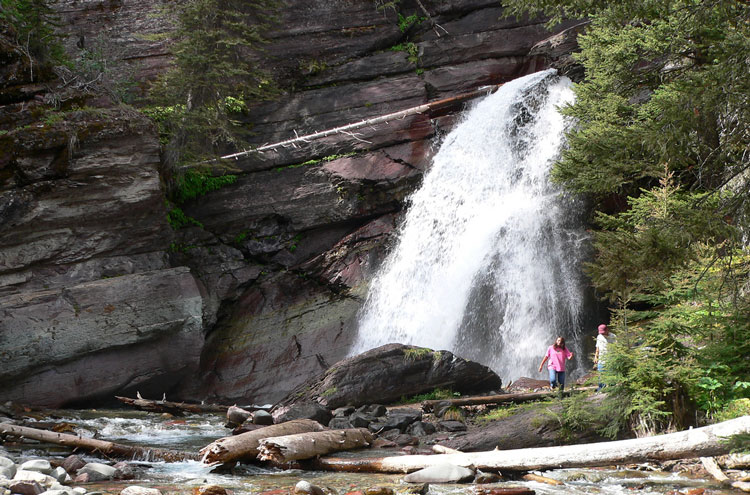
We have a lot of helpful practical information and tips about this walk, covering everything from the best books and maps, to timing and weather, geting there, possible problems, whether you need a guide and where to find them, and useful websites. This section is only open to members.
Membership is FREE AND JOINING TAKES 30 SECONDS. To login or sign up click here
Safety and problems: All walks have inherent risks and potential problems, and many of the walks featured on this website involve significant risks, dangers and problems. Problems of any sort can arise on any walk. This website does not purport to identify any (or all) actual or potential risks, dangers and problems that may relate to any particular walk.
Any person who is considering undertaking this walk should do careful research and make their own assessment of the risks, dangers and possible problems involved. They should also go to “Important information” for further important information.
Anyone planning an expedition to this place should see further important information about this walk.
Safety and problems: All walks have inherent risks and potential problems, and many of the walks featured on this website involve significant risks, dangers and problems. Problems of any sort can arise on any walk. This website does not purport to identify any (or all) actual or potential risks, dangers and problems that may relate to any particular walk.
Any person who is considering undertaking this walk should do careful research and make their own assessment of the risks, dangers and possible problems involved. They should also go to “Important information” for further important information.
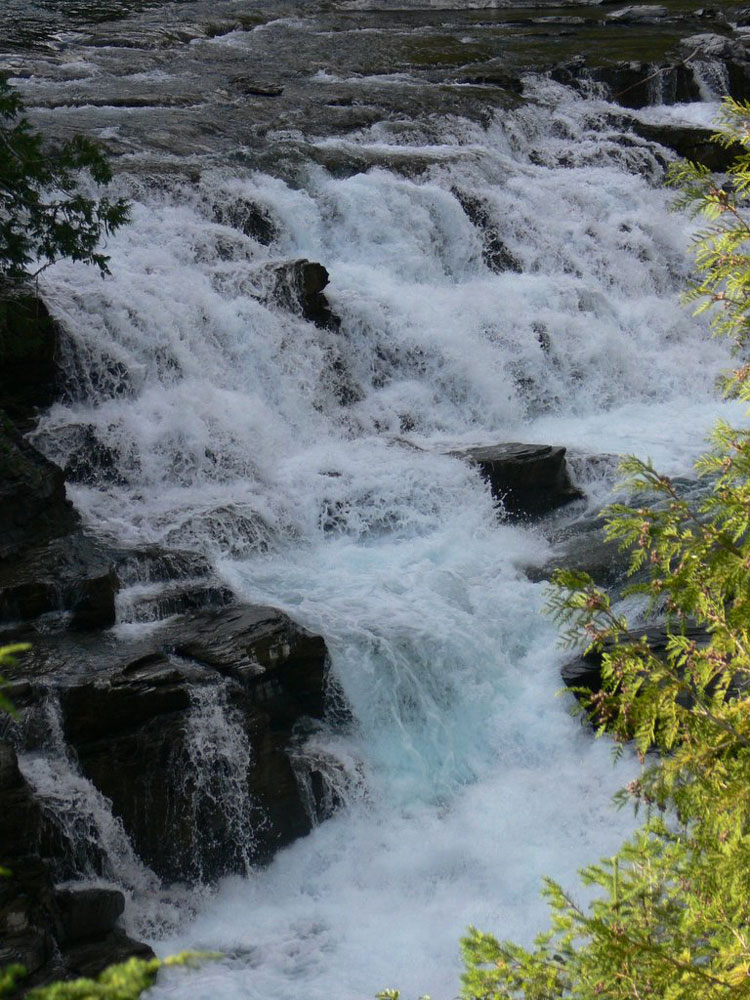
OTHER ACCOUNTS
share your experiences
Add your experiences, suggestions and photos. We would be delighted to receive your writing and ideas (which will be attributed appropriately where published).
Anyone planning an expedition to this place should see further important information about this walk.
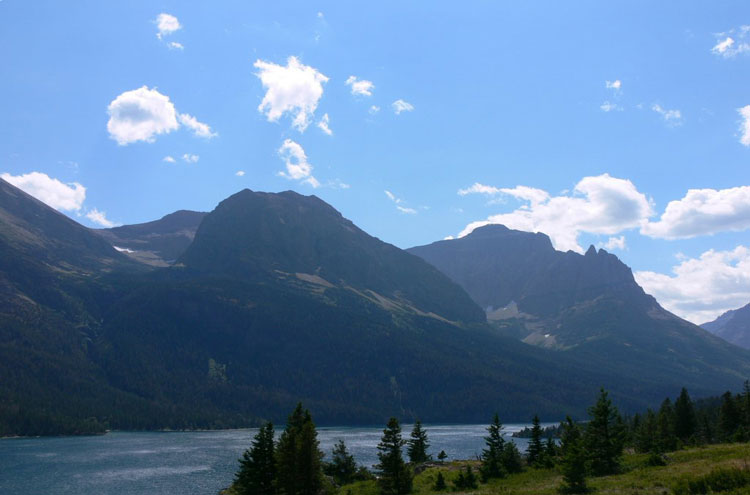
Responsible travel matters, a lot. How you travel will make a real difference - for better or worse. PLEASE consider this when making plans. Read more



